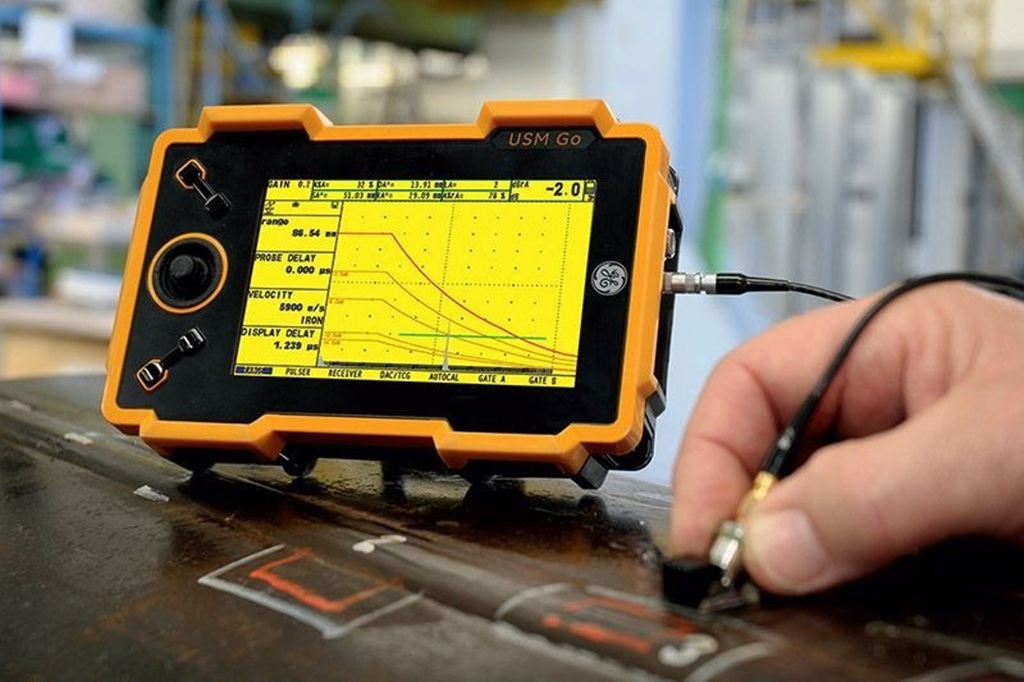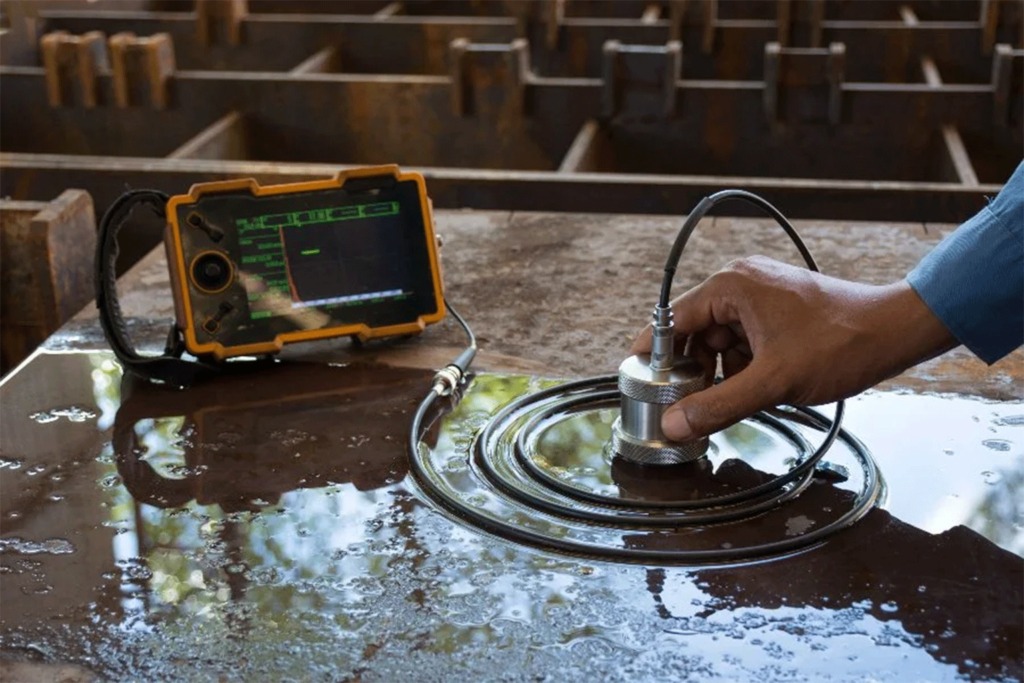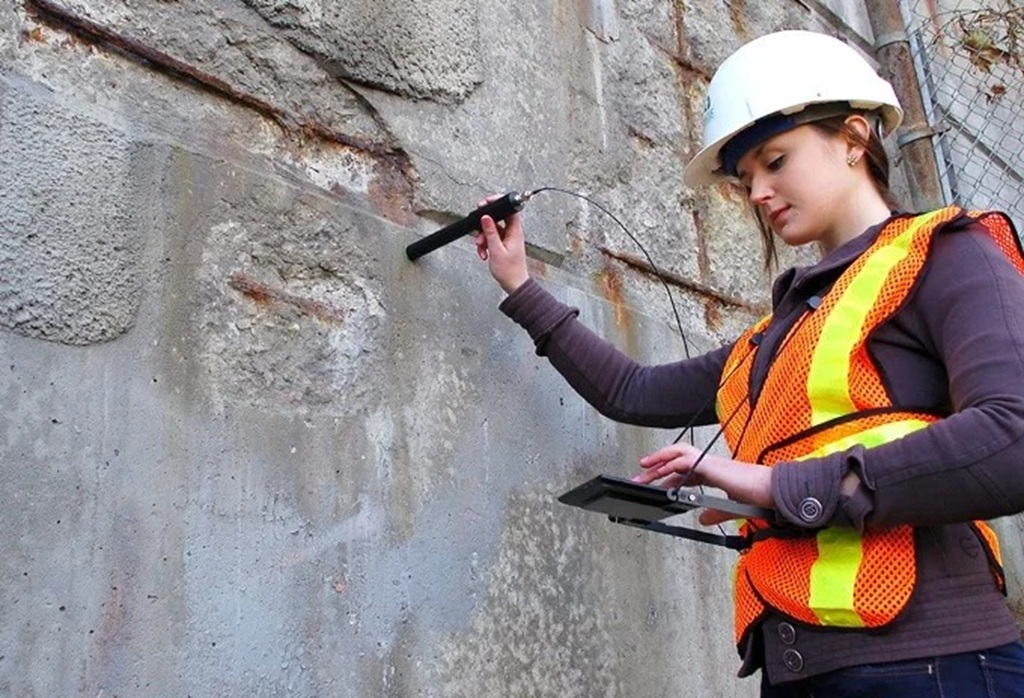In the realm of civil engineering and infrastructure maintenance, the integrity of concrete structures is paramount. Bridges, dams, buildings, and tunnels—all rely on the robust strength of concrete to withstand immense loads and environmental stressors. However, concrete, despite its apparent solidity, can harbor hidden flaws and deterioration over time. Detecting these issues early is crucial for preventing catastrophic failures and ensuring long-term structural safety. This is where concrete ultrasonic testing equipment steps in, offering a non-destructive window into the material’s internal health.
Understanding the Fundamentals: How Ultrasonic Testing Works
At its core, ultrasonic testing employs high-frequency sound waves to probe the depths of concrete. These waves, beyond the range of human hearing, are generated by a transducer, a device that converts electrical energy into mechanical vibrations. The transducer is placed on the concrete surface, and the emitted ultrasonic pulses travel through the material.
As these waves propagate, they encounter interfaces between different materials or discontinuities within the concrete, such as voids, cracks, or variations in density. These interfaces cause the waves to reflect or refract, changing their path and speed. The reflected waves, known as echoes, are then captured by the same or another transducer and analyzed.
The analysis of these echoes provides crucial information about the concrete’s internal structure. For instance, the time taken for the waves to travel and return indicates the depth of a flaw. The amplitude of the echoes reveals the size and nature of the discontinuity. And changes in wave velocity can point to variations in concrete quality and density.
Types of Ultrasonic Testing Techniques for Concrete
Several ultrasonic testing techniques are employed for concrete evaluation, each tailored to specific applications and the information sought:
- Pulse Velocity Testing: This is the most common method, measuring the time it takes for an ultrasonic pulse to travel between two transducers placed at known distances on the concrete surface. The pulse velocity is directly related to the concrete’s modulus of elasticity, a measure of its stiffness and strength. Lower velocities often indicate the presence of defects or deterioration.
- Ultrasonic Pulse Echo (UPE): Similar to sonar, UPE uses a single transducer to transmit and receive ultrasonic pulses. It’s particularly effective for detecting internal flaws like cracks, voids, and delamination. The reflected echoes are analyzed to pinpoint the location and size of these defects.
- Impact-Echo Testing: This technique involves generating stress waves by mechanically impacting the concrete surface. The resulting echoes are analyzed to identify subsurface flaws, especially in thick concrete structures where traditional pulse velocity testing may be limited.
- Ultrasonic Surface Wave Testing (USW): This method utilizes surface waves, which travel along the concrete’s surface. It’s useful for detecting near-surface defects and assessing the quality of concrete cover over reinforcement.
Equipment Essentials: Key Components and Considerations
The concrete ultrasonic testing equipment typically comprises several essential components:
- Transducers: These are the heart of the system, responsible for generating and receiving ultrasonic waves. Their frequency and size are crucial factors, influencing the penetration depth and resolution of the test. Lower frequencies penetrate deeper but offer lower resolution, while higher frequencies provide better resolution but have limited penetration.
- Pulse Generator and Receiver: This unit generates the electrical pulses that drive the transducer and amplifies the received echoes.
- Display Unit: This component displays the ultrasonic waveforms and processed data, often in the form of A-scans (amplitude vs. time) or B-scans (cross-sectional images). Modern units often feature digital displays and data logging capabilities.
- Couplant: A couplant, such as gel or grease, is used to ensure efficient transmission of ultrasonic waves between the transducer and the concrete surface. It eliminates air gaps that can impede wave propagation.
- Calibration Blocks: These are reference blocks with known dimensions and material properties, used to calibrate the equipment and ensure accurate measurements.
Applications Across the Infrastructure Spectrum
Concrete ultrasonic testing finds applications in a wide range of infrastructure projects:
- Bridge Inspections: Evaluating the condition of bridge piers, decks, and abutments to detect cracks, delamination, and other forms of deterioration.
- Dam Safety Monitoring: Assessing the integrity of concrete dams to prevent catastrophic failures due to internal cracking or erosion.
- Building Inspections: Evaluating the quality of concrete in columns, beams, and slabs to ensure structural safety and compliance with building codes.
- Tunnel Assessments: Detecting cracks and voids in tunnel linings to maintain stability and prevent water ingress.
- Precast Concrete Quality Control: Ensuring the quality and uniformity of precast concrete elements during manufacturing.
- Fire Damage Assessment: Evaluating the extent of damage to concrete structures after exposure to fire.
Advantages of Ultrasonic Testing: A Non-Destructive Approach
The primary advantage of ultrasonic testing is its non-destructive nature. It allows for the evaluation of concrete integrity without causing damage to the structure, preserving its functionality and aesthetics. This contrasts with destructive testing methods, which require taking core samples that can weaken the structure.
Other advantages include:
- Rapid and Efficient Testing: Ultrasonic testing can be performed relatively quickly, allowing for the assessment of large areas in a short time.
- Accurate and Reliable Results: With proper calibration and technique, ultrasonic testing provides accurate and reliable information about the concrete’s internal condition.
- Versatility: Ultrasonic testing can be used to evaluate a wide range of concrete structures and detect various types of defects.
- Cost-Effectiveness: Compared to destructive testing, ultrasonic testing is often more cost-effective, as it eliminates the need for costly repairs and replacements.
Navigating Challenges and Ensuring Accuracy
While ultrasonic testing is a powerful tool, it’s essential to acknowledge its limitations and challenges:
- Surface Roughness: Rough concrete surfaces can interfere with wave transmission, requiring proper surface preparation.
- Reinforcement Interference: Steel reinforcement can reflect and refract ultrasonic waves, making it challenging to interpret the results.
- Moisture Content: Moisture variations in concrete can affect wave velocity, requiring careful consideration during data analysis.
- Operator Skill: The accuracy of ultrasonic testing depends heavily on the operator’s skill and experience.
To ensure accurate and reliable results, it’s crucial to:
- Use calibrated equipment.
- Employ proper coupling techniques.
- Interpret data carefully, considering factors like reinforcement and moisture content.
- Utilize experienced and certified operators.
Read More Also: The Environmental Impact of Purchasing Used Construction Equipment
People Also Ask (FAQs)
Q: What is the difference between pulse velocity and pulse echo testing?
A: Pulse velocity measures the speed of ultrasonic waves through concrete to assess overall quality, while pulse echo uses reflected waves to detect specific internal flaws like cracks and voids.
Q: Can ultrasonic testing detect rebar corrosion?
A: While ultrasonic testing can indicate areas of potential corrosion by detecting changes in concrete density and cracking, other specialized techniques are more direct for corrosion detection.
Q: How deep can ultrasonic testing penetrate concrete?
A: The penetration depth depends on the frequency of the transducer and the concrete’s composition. Lower frequencies can penetrate deeper, but typical applications reach depths of several meters.
Q: Is ultrasonic testing affected by temperature?
A: Yes, temperature can affect the velocity of ultrasonic waves in concrete. Temperature compensation techniques are often used to minimize this effect.
Q: How often should concrete structures be tested using ultrasonic equipment?
A: The frequency of testing depends on the structure’s age, condition, and environmental exposure. Critical structures may require more frequent inspections, while others may be tested periodically.
Q: What is the cost of concrete ultrasonic testing equipment?
A: The cost varies depending on the equipment’s complexity and features, ranging from a few thousand to tens of thousands of dollars.
Q: What training is needed to perform ultrasonic testing on concrete?
A: Proper training and certification are essential. Organizations like the American Society for Nondestructive Testing (ASNT) offer certifications for ultrasonic testing personnel.
Read More Also: Mastering Swimming Pool Design Calculations for Your Dream Oasis
Conclusion: Investing in Concrete’s Long-Term Health
Concrete ultrasonic testing equipment is an indispensable tool for ensuring the safety and longevity of concrete infrastructure. By providing a non-destructive means to assess the material’s internal condition, it allows for the early detection of defects and deterioration, enabling timely repairs and preventive maintenance. As infrastructure ages and environmental challenges intensify, the role of ultrasonic testing will only become more critical. Investing in this technology and training skilled operators is an investment in the long-term health and safety of our built environment. Through careful application, we can unlock the secrets hidden within concrete, ensuring its continued strength and resilience for generations to come.





